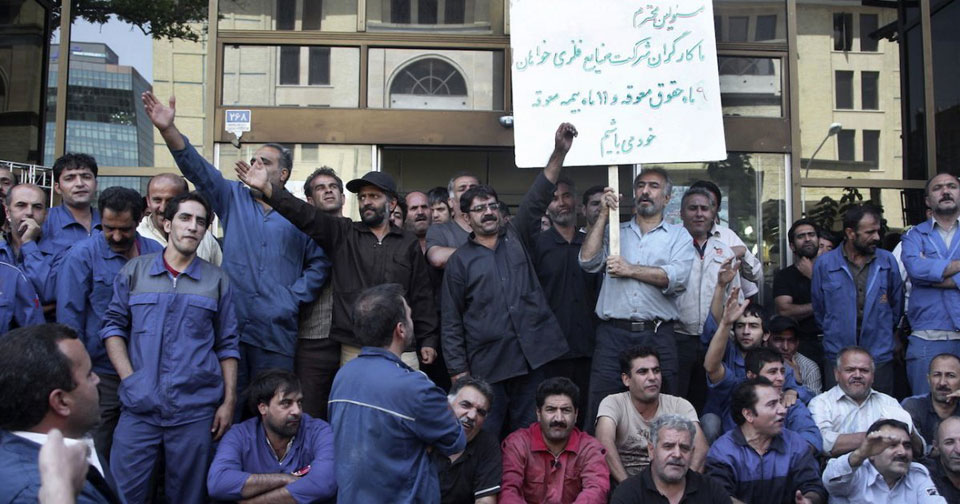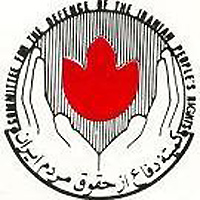
The next step in the undeclared war on Iran has been taken by the United States, with the first wave of sanctions imposed last week, following the unilateral withdrawal of the U.S. from the Joint Comprehensive Plan of Action (JCPOA).
The JCPOA, widely known as the Iran nuclear deal, was agreed in 2015 by the United States, Russia, and the European Union to halt the domestic uranium enrichment program in Iran, in exchange for the relaxation of previously imposed sanctions. The deal was being monitored by the International Atomic Energy Agency (IAEA) and, up until the most recent inspection earlier in 2018, Iran was deemed to be following the terms of the agreement.
President Donald Trump has never been a fan of the deal and promised to withdraw as part of his election campaign rhetoric. For Trump, relaxing sanctions on Iran simply allows the regime in Tehran to draw down international resources which it can then use to pursue its adventurous foreign policy in the Middle East through what the U.S. deems to be its proxies in the region.
There can be no doubt about the anti-people credentials of the Iranian regime. For over 40 years, the Islamic Republic has been to the forefront in its abuse, arrest, and torture of the political opposition, trade unionists, women’s organizations, and in suppressing student protests. The regime in Iran is only matched in its vicious response to internal criticism by the United States’ key allies in the region, Israel and Saudi Arabia.
However, the sanctions imposed last week by the United States, which will be further intensified on November 4, are not about acting in the interests of the Iranian people and freeing them from an oppressive regime. The U.S. sanctions are entirely about the power balance in the Middle East, with the U.S. seeking to impose its will and maximize control of the region’s resources.
Ironically, the path being pursued by Trump was initiated under President Barack Obama, as part of the United States’ New Middle East Plan, to reassert influence and bolster resource control in the region. Obama’s version of the Plan resulted in the JCPOA and a more nuanced approach to containing the perceived threat of Iran to the regional power balance.
Not surprisingly, for Trump, there are no such niceties. For all intents and purposes, the gloves are off and the New Middle East Plan-Mark 2 is aimed simply at bringing Iran to its knees, whatever the cost to the prospects for peace in the region or to the plight of the people of Iran.
That cost, as the protests which have engulfed the streets of Iranian cities since the turn of the year have shown, is already high and is only going to get higher. In December and January, protests against unemployment, poor pay and conditions, and government corruption erupted across 80 cities in Iran and were met with a brutal response by the regime, resulting in hundreds of arrests and scores of deaths.
The protests, which have arisen from the economic difficulties facing the country and the mismanagement of the economy, are likely to be exacerbated by further sanctions. They continue to be an expression of the frustration of large sections of working class youth with the regime.
In the months since that initial wave of protest, the situation in Iran has worsened, with a drop in the value of Iranian currency to less than 30 percent of its April exchange value against the U.S. dollar. This has meant the value of basic goods has quadrupled while wages remain stagnant, precipitating a sharp drop in the living standards of ordinary people, all the time amidst spiraling mass unemployment.
Water shortages, resulting from environmental degradation exacerbated by the ill-judged policies of the regime, have hit significant swathes of central and southern Iran. Power cuts are a daily routine and, in the 40-50°C (104-122°F) temperatures in these regions, drive people to despair.
Opposition sources inside Iran claim that it is not an exaggeration to suggest that 80percent of the population now clamor for political change. They are held at bay by the regime’s use of repression and brute force. Reports and footage widely emerging from the streets in Iran show a regime clearly wary of the mood prevailing amongst the people, with a significant deployment of its repressive machinery around central squares, main thoroughfares, and transport hubs, watching the population and ready to move in on any sign of dissent.
Against this context, the latest round of U.S. sanctions has resulted in those European companies which had begun to re-engage with Iran putting their plans on hold. German car and truck manufacturer Daimler has dropped plans to expand its business in Iran. French companies Peugeot and Renault have suspended operations in Iran and have said they will comply with the U.S. sanctions.
French energy giant Total has said it will quit the multibillion-dollar South Pars gas project if it cannot secure a waiver from the U.S. sanctions—a request French Finance Minister Bruno Le Maire said last month had been rejected along with others by French corporations.
Total signed a contract in 2017 to develop Phase II of the South Pars field with an initial investment of $1 billion and has not yet said what it will do with its 30 percent stake should it pull out. It has until November 4 to wind down its Iran operations, barring any surprise exemption.
The widespread withdrawal and suspension of economic activity by European companies is remarkable because the U.S. sanctions have no international force and no United Nations backing. The U.S. strategy is essentially that of the playground bully. Companies are free to deal with Iran if they choose but they may find it difficult to do business in markets with the U.S. For most companies, the choice between sticking with Iranian business or losing access to the U.S. market is no choice at all. The United States knows this, and the international community appears powerless to prevent it.
The latest round of sanctions will cripple even further an already crumbling Iranian economy. The confrontational position taken by the U.S. is encouraging the hardliners in Iran to feel emboldened. Former President Ahmadinejad has recently called upon current President Rouhani to resign. Those who have always opposed the JCPOA are now regarding the word of the U.S. as worthless and are seeking to turn the current turmoil to their advantage.
Meanwhile the people of Iran, their suppressed trade unions and political activists, continue to orchestrate regular strike action, street protests, and actions in opposition to the endemic corruption at the heart of the Islamic Republic.
Inside Iran, it is the view of the left, progressive, and pro-peace forces, including socialists and communists, that the time has come to help strengthen the influence of the people’s protest movement through the taking of concrete and practical steps towards closer and more effective cooperation, most importantly, the establishment of a united front against the regime.
A democratic Iran would still face the threat of political sanctions and the ongoing danger of military intervention, by the U.S. or one of its proxies in the region, but would be a huge step forward.
The worst-case scenario—a military strike on Iran, which is something many in the U.S. administration have not taken off the table—would still have the potential to generate chaos and political disintegration even greater than that seen in Iraq following Western intervention. Western foreign policy, specifically that of the United States, is currently treading a very fine line from which one slip could plunge the region into war.










